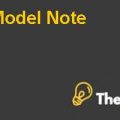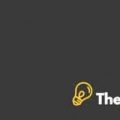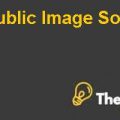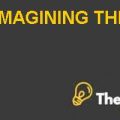
PART B
As per the changes in the International Accounting Standards IAS 38 which restricts revenue based amortization method and follow on the amortization intangible assets, there are certain changes done by Australian Accounting Standard Board AASB, which provided in their circulars. REA Group Limited has to make sure about the main changes is done with finite useful lives which are as follows:
- Reviewed every year of the reporting period
- Changes of expected future consumption as according
- The method will reflect the changes with accounting estimates
- Previous estimates will be inappropriate
- Residual Value will be changed with respect future consumptions
- Benefits of pattern consumption will be changes respectively
- Reflect in Comprehensive Income as according to changes
As per the AASB main criteria of changes in the intangible assets are given below
“The amortization period and the amortization method for an intangible asset with a finite useful life shall be reviewed at least at the end of each annual reporting period. If the expected useful life of the asset is different from previous estimates, the amortization period shall be changed accordingly. If there has been a change in the expected pattern of consumption of the future economic benefits embodied in the asset, the amortization method shall be changed to reflect the changed pattern. Such changes shall be accounted for as changes in accounting estimates in accordance with AASB 108.
During the life of an intangible asset, it may become apparent that the estimate of its useful life is inappropriate. For example, the recognition of an impairment loss may indicate that the amortization period needs to be changed.”(Intangible, 2014)
Explanations:
Now REA Group Limited Customer Lists/ Domain Names/ Brand Names/ Advertising relationships are treated as same procedure which guideline are provided by the Australian Accounting Standard Board AASB with concerned International Accounting Standard IAS. They are also shown in the statement of comprehensive income for relatively with amendment of the standards. It also discloses in the disclosure portion of the company financial statements with all relevant fields of the area.
PART C
Consultative Accounting Standard Setting
The objective of the organization for consultative accounting standard setting which are better and improved conceptualization as follows:
- Public interest
- Better quality
- Better development with all over the world accounting standards
| Advantages | Disadvantages |
| Highlight | |
| The main advantage of the consultative accounting standard is Better “Development of Accounting Policy with Publicly support” | The main disadvantage of consultative accounting standard setting is “involvement of the third party” |
| Explanation | |
| It creates simplify technical issues of the accounting and its exposure relatively with the complexity of the policies evolving in the global | It lacks the secrecy of the of company accounts with the third party involvements and also the threat of the inside information about the entity |
| Conclusion | |
| An independent group of experts with an appropriate mix of recent practical experience of standard-setting, or of the user. | An Independent group of expert creates some difficulties of the entity with respect to involvement in financial statements |
Conclusion:
As per the new changes in the practical field of accounting with respect to the International Accounting Standards IAS, the Consultative Accounting Standard setting is more beneficial for the organization on their financial statement. It creates a good and healthy environment with the attachment of the global requirements.
Arguments with respect to Clarification of acceptable methods of Depreciation and Amortization:
As per the Australian Accounting Standards Board draft AASB exposure regarding methods of depreciation and amortization, because there is a big technical issue regarding accounting standard issues of international. The following is one technical issue continuing with comments and their solution with it
- IAS 16 Property, Plant and Equipment and IAS 38 Intangible Assets are not giving the right to record depreciation amortizations under the method of revenue based amortization. This effect reflects that pattern of future economic benefits generated from the asset, rather than reflecting the pattern of consumption of the future economic benefits personified with the asset.
Explanation:
As Respect to the future consumption benefit of assets is related to ability of output produced with the cash inflow not related with price of the product of that output. There are big changes in standard law of the accounting rules and regulation. IAS 8 comes in, it’s because of the changes of accounting policy, estimates and errors. It gives an idea about the previous calculations with respect to the changes in the standard procedure and its effect in the statement of comprehensive income. It’s also an effect on the asset future consumption with respect their residual value and market sustainability.....................................
This is just a sample partial case solution. Please place the order on the website to order your own originally done case solution.













